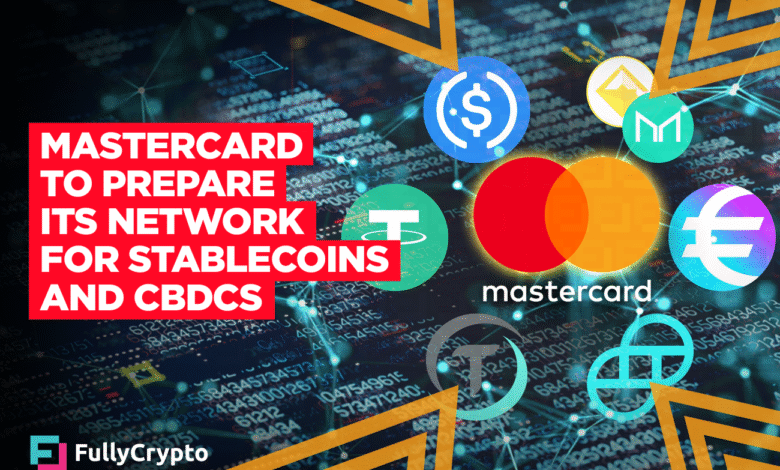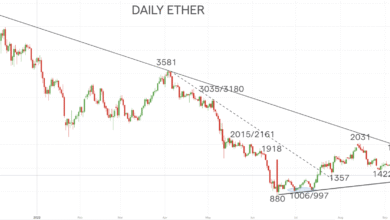Mastercard Stablecoins: Paving the Way for Mass Adoption

Mastercard stablecoins are paving the way for a new era of digital finance, bridging the gap between traditional payment systems and cryptocurrency. As the adoption of stablecoins continues to gain momentum, Mastercard is at the forefront of enabling secure and efficient global digital payments. Recent regulatory measures, such as the U.S. GENIUS Act and the European Union’s MiCA framework, provide a robust backdrop for this transformation. These developments signal a shift toward a more integrated cryptocurrency infrastructure, where stablecoins can thrive within established financial regulations. With these advancements, Mastercard stablecoins are set to redefine how we engage with money in our increasingly digital world.
The concept of digital currencies has evolved dramatically, and at the heart of this evolution are assets like Mastercard-backed digital coins. These innovative tools promise to revolutionize payment processes, offering a seamless experience in financial transactions. With the ongoing global push towards cryptocurrency adoption and a solid regulatory framework emerging, the landscape for digital payments is rapidly changing. Institutions are rallying around the potential of stable digital currencies, aiming to enhance the efficiency and security of international monetary exchanges. The future of finance increasingly favors systems that harmonize with existing regulations, ensuring stability and trust within the evolving financial market.
Mastercard Stablecoins: A Catalyst for Financial Innovation
Mastercard is at the forefront of advancing stablecoins within the financial sector, promoting them as a viable alternative to traditional payment methods. As the company integrates its stablecoin infrastructure with global payment systems, it is setting the stage for a future where digital currencies can offer a seamless transaction experience. Innovations like the Mastercard Multi-Token Network are designed to innovate current transaction processes, making them faster and cost-effective while ensuring compliance with emerging financial regulations.
This push towards stablecoins aligns with a broader trend of increasing institutional adoption, as major players in the financial world recognize the potential of cryptocurrency infrastructure to build more efficient payment systems. The transformative potential this brings not only enhances transaction speed but also provides enhanced security features that are critical in financial services. As consumers become more familiar with digital currencies, companies like Mastercard are poised to capitalize on this shift.
Regulatory Clarity: A Turning Point for Stablecoins
The recent advancements in global regulatory frameworks, such as the EU’s Markets in Crypto-Assets (MiCA) and the U.S. GENIUS Act, are pivotal for the adoption of stablecoins in mainstream finance. These regulations provide a standardized approach, creating a safer environment for both consumers and businesses to engage with digital payments. With clear guidelines in place, companies can innovate without fear of regulatory backlash, fostering greater trust in stablecoin transactions.
Furthermore, as jurisdictions like Singapore and the UAE adopt similar regulations, they enhance the global landscape for digital assets. This convergence of regulatory standards promotes interoperability across markets, making it easier for consumers to use stablecoins worldwide. Such clarity not only reassures users but can also stimulate further institutional investment, critical for scaling the infrastructure necessary for a robust cryptocurrency ecosystem.
The Role of Mastercard in Stablecoins Integration
Mastercard’s contributions to the development and integration of stablecoins are transforming how we perceive digital payments. The launch of products like the Mastercard Crypto Credential emphasizes the importance of trust and safety in utilizing cryptocurrency for everyday transactions. By ensuring compliance with regulatory standards, these products pave the way for enhanced user experiences, encouraging broader adoption of stablecoins.
In this evolving landscape, the company is not only addressing current challenges but also proactively shaping the future of digital payments. The seamless integration of stablecoins into existing payment structures promises to enhance the overall financial ecosystem, reducing transaction fees and eliminating friction in cross-border payments. Mastercard’s commitment to innovation aligns perfectly with the growing importance of stablecoins in providing accessible and efficient payment methods.
Financial Regulation and Stablecoins: Ensuring Trust in Digital Payments
The interplay between financial regulation and stablecoin adoption cannot be understated. As governments and regulatory bodies prioritize clarity around cryptocurrency, consumers gain confidence in using stablecoins for transactions. Regulations serve as a crucial backbone that protects consumers from fraud and provides guidelines that businesses can rely on as they develop products and services integrating stablecoins.
Moreover, regulations like those established by the U.S. and EU are an essential part of the broader narrative around financial stability. They ensure that stablecoins operate under a framework that mitigates risks associated with volatility characteristic of many cryptocurrencies. This regulatory assurance ultimately enhances the reputation of stablecoins as a safe and reliable vehicle for digital payments, which is vital for mainstream adoption.
Enhancing Global Payment Systems with Stablecoins
Integrating stablecoins within global payment systems stands to revolutionize the way international transactions are conducted. By leveraging the advantages of stablecoins, companies can offer lower fees and faster transaction speeds compared to traditional banking systems. The need for efficient payment solutions is more significant than ever, and stablecoins can bridge gaps that currently exist in the global financial landscape.
Additionally, the scalability of stablecoins allows businesses to cater to a global customer base without the constraints faced by conventional currency systems. This promises a more inclusive financial system where individuals and businesses from diverse backgrounds can transact freely and economically, further proving the capabilities of cryptocurrency infrastructure to transform global commerce.
Mastercard’s Tools Contributing to Stablecoin Growth
Mastercard has released innovative tools that play a crucial role in facilitating the stablecoin ecosystem. The Mastercard Multi-Token Network exemplifies how the company is committed to enabling secure, fast transactions while ensuring compliance with international regulations. Such tools empower merchants and consumers, making it easier for them to adopt digital payment solutions without fearing compliance risks.
Moreover, by improving settlement processes through these innovations, Mastercard helps to create a seamless experience for users. These services are particularly valuable for cross-border payments, where traditional banking systems often falter. By enhancing payment efficiencies and security, Mastercard is making significant strides in promoting stablecoins as an everyday payment solution, ensuring they are accessible and reliable for all users.
The Future of Digital Payments: Embracing Stablecoins
The future of digital payments hinges significantly on the increased use of stablecoins. As we observe a shift towards decentralization and technological innovation, stablecoins offer a much-needed stability alternative for consumers who may be wary of traditional cryptocurrencies’ volatility. This trend is being accelerated by companies like Mastercard, which are eager to support and promote the seamless integration of stablecoins into existing financial systems.
With ongoing advancements in technology and regulatory frameworks, the widespread acceptance of stablecoins is on the horizon. The increasing consumer familiarity with digital currencies and the growing number of businesses adapting to this change further evidence this. As more players enter the stablecoin market, we can expect to witness a more robust and diverse financial ecosystem that embraces innovation while prioritizing security and compliance.
Stablecoin Adoption: The Road Ahead
Adoption of stablecoins is not without its challenges, yet the trajectory indicates a promising future. Overcoming technological barriers and ensuring robust consumer protections are critical for fostering trust and facilitating a smoother transition to digital currencies. Mastercard’s ongoing efforts to enhance infrastructure and create user-friendly tools are vital to overcoming these hurdles and capturing market interest in stablecoins.
Additionally, public education on the benefits and functionalities of stablecoins will play a pivotal role in their adoption. As consumers learn about the advantages of reduced transaction costs and enhanced security, the mainstream financial landscape can evolve to accommodate these digital currencies. Ultimately, collaboration between industry stakeholders, regulators, and consumers is essential for realizing the full potential of stablecoins in transforming global payments.
Building Interoperability in Stablecoins for Wider Acceptance
For stablecoins to achieve widespread acceptance, interoperability across various financial platforms is essential. This integration allows users to transact seamlessly between different stablecoin ecosystems and traditional currencies, enhancing usability for everyday transactions. Mastercard’s initiatives aim to create a more interconnected financial environment, enabling smooth transitions between digital currencies and existing payment systems.
Interoperability not only simplifies the user experience but also promotes increased competition among stablecoin providers, leading to improved services and lower costs for consumers. By developing standards that facilitate this interoperability, Mastercard is pioneering the path for stablecoins to become an essential component of daily financial transactions, ensuring that they are not isolated but rather well-integrated within the broader financial context.
Frequently Asked Questions
What role do Mastercard stablecoins play in the future of digital payments?
Mastercard stablecoins are poised to significantly enhance the future of digital payments by facilitating faster, lower-cost transactions and providing secure compensation options for gig workers and content creators. Their integration into established global payment systems is set to streamline digital financial services, making them more accessible and efficient.
How does Mastercard support stablecoins adoption through new infrastructure?
Mastercard supports stablecoins adoption through its innovative infrastructure, which includes products like the Mastercard Multi-Token Network and Mastercard Crypto Credential. These tools enable secure, compliant, and efficient stablecoin transactions, helping to overcome barriers and encourage broader acceptance within the global digital payments ecosystem.
What are the regulatory developments influencing Mastercard stablecoins?
Recent regulatory developments, such as the U.S. GENIUS Act and the European Union’s MiCA framework, provide a clear legal foundation for Mastercard stablecoins. This clarity enhances stability and safety in cryptocurrency infrastructure, encouraging mass adoption and creating a model for other regions like Singapore and the UAE.
How can Mastercard stablecoins enhance global payment systems?
Mastercard stablecoins can enhance global payment systems by offering a frictionless method of conducting cross-border transactions. With a focus on security and user-friendliness, they are designed to integrate seamlessly into existing financial frameworks, ultimately delivering faster and lower-cost options for consumers and businesses alike.
What are the challenges to the mass adoption of Mastercard stablecoins?
Challenges to the mass adoption of Mastercard stablecoins include the need for robust infrastructure that ensures security and user trust. Additionally, stablecoins must also navigate financial regulation and develop cross-platform interoperability to facilitate widespread use in mainstream financial transactions.
Why is infrastructure crucial for the success of Mastercard stablecoins?
Infrastructure is crucial for the success of Mastercard stablecoins as it underpins the security, trust, and user experience necessary for mainstream adoption. A well-designed infrastructure allows stablecoins to integrate into existing payment systems, enhancing their reliability and encouraging broader acceptance in global markets.
What is the significance of Mastercard’s approach to stablecoins and financial regulation?
Mastercard’s proactive approach to stablecoins and financial regulation highlights its commitment to facilitating responsible growth in the digital payments sector. By supporting strong regulatory frameworks, Mastercard aims to ensure safe and compliant use of stablecoins, promoting their adoption in everyday transactions.
How does Mastercard’s technology ensure compliance with stablecoins transactions?
Mastercard employs advanced technology through tools like the Mastercard Multi-Token Network and Crypto Credential to ensure compliance with stablecoin transactions. These technologies manage settlement processes and enhance safety through adherence to global financial standards.
What are the potential benefits of Mastercard stablecoins for consumers?
Consumers stand to benefit from Mastercard stablecoins through lower transaction fees, faster payment processing, and enhanced financial flexibility. As stablecoins gain traction in mainstream payments, they can offer users a more efficient way to engage in everyday transactions.
| Key Point | Details |
|---|---|
| Stablecoins Utility | Mastercard supports stablecoins for faster, lower-cost cross-border payments and compensation for gig workers. |
| Regulatory Frameworks | The U.S. GENIUS Act and EU Markets in Crypto-Assets (MiCA) provide a solid regulatory foundation for stablecoin adoption. |
| Global Adoption | Countries like Singapore, Hong Kong, and the UAE are creating similar regulatory frameworks to promote stablecoin usage. |
| Mastercard’s Initiatives | Launch of products like the Mastercard Multi-Token Network and Crypto Credential to enhance stablecoin transactions. |
| Challenges Ahead | Stablecoins need user trust and interoperability to be adopted widely beyond specialized use cases. |
Summary
Mastercard stablecoins are paving the way for a new era of digital finance by ensuring scalable and secure transactions in a rapidly evolving regulatory landscape. With clear regulations emerging and global support for improved infrastructure, Mastercard is championing the integration of stablecoins into everyday financial systems. By addressing the need for security, user-friendly interfaces, and interoperability, they aim to make stablecoins a mainstream payment method, thus significantly transforming global payment dynamics.




